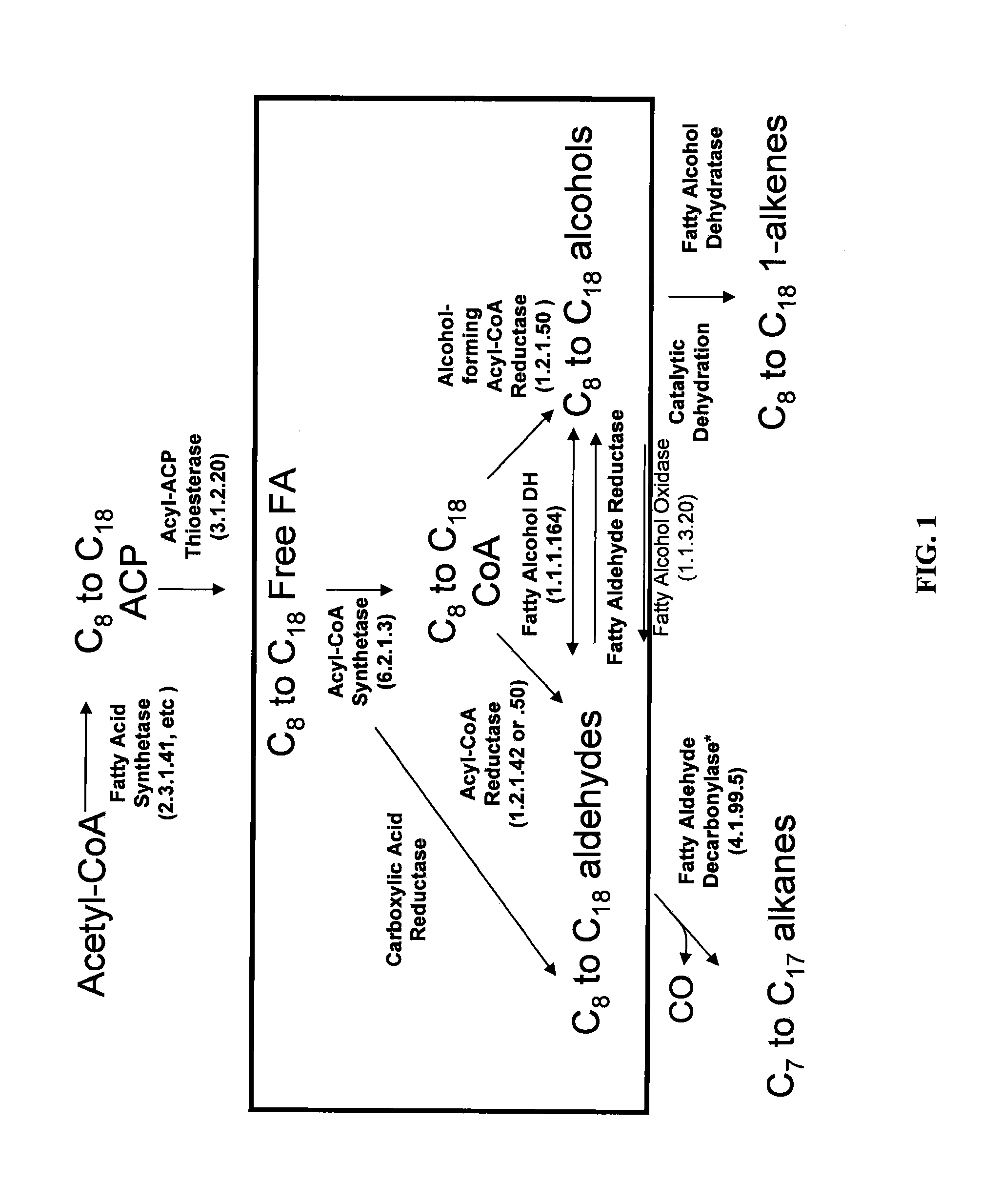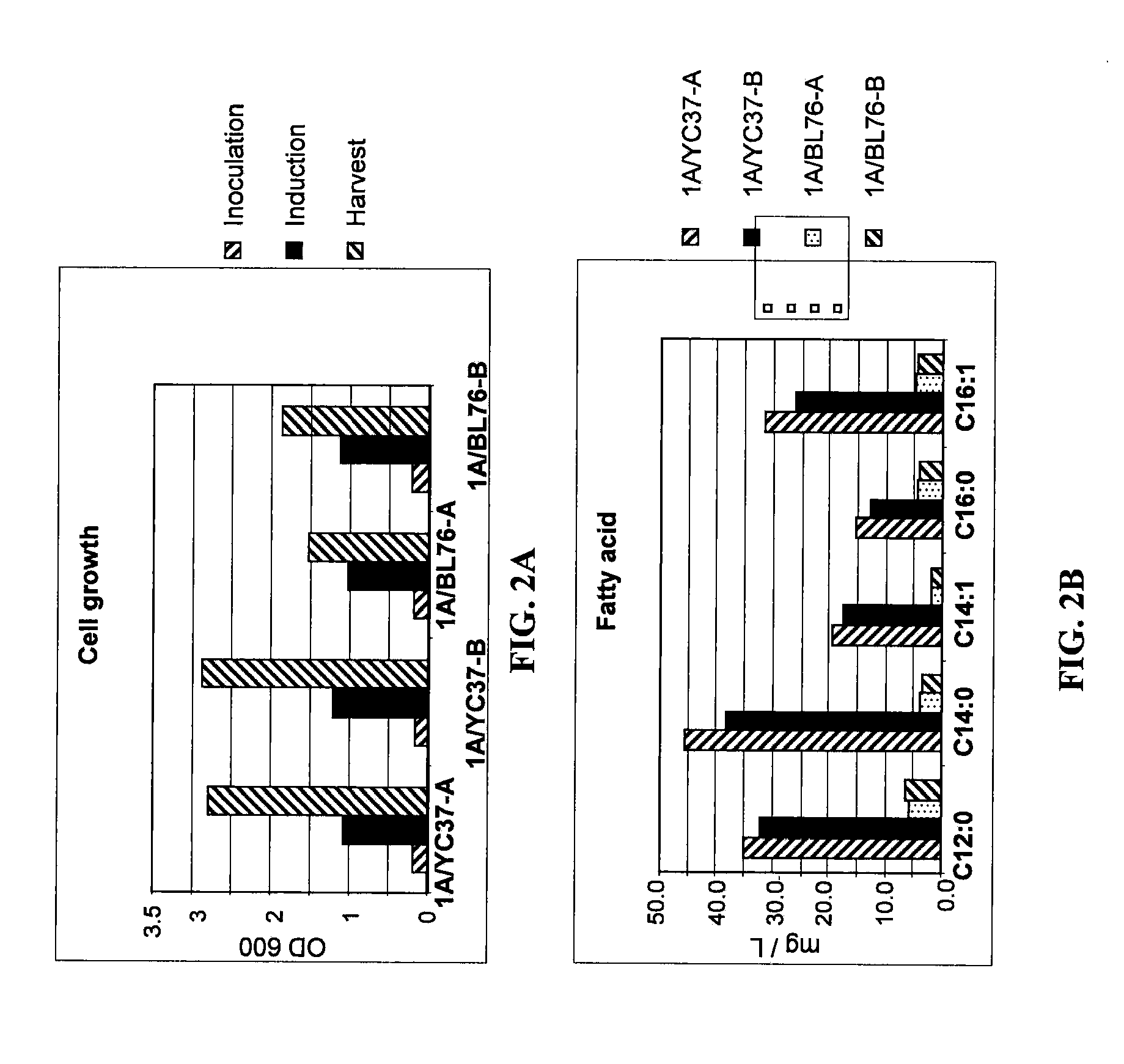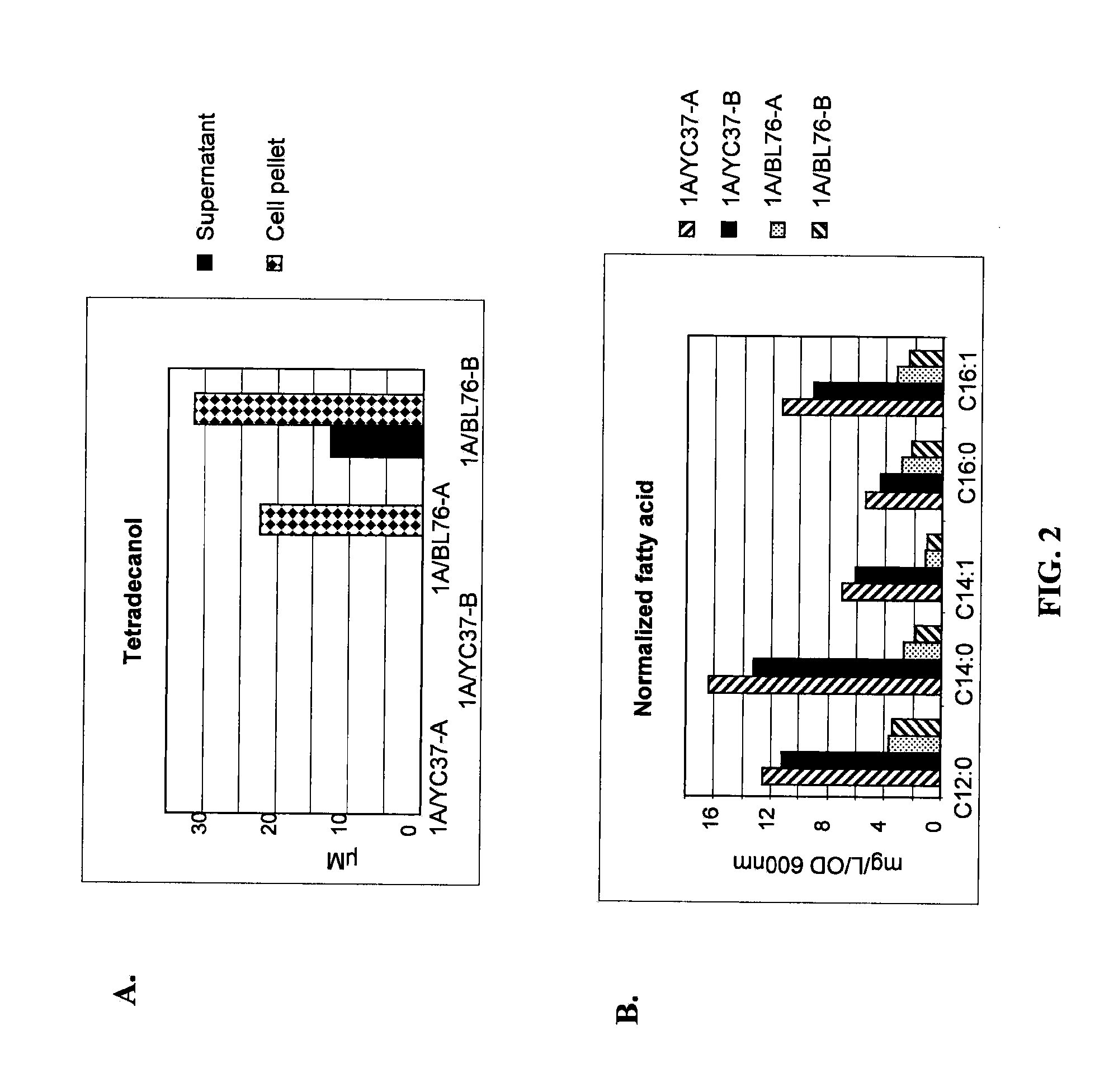Microbial production of fatty alcohols
a technology of fatty alcohol and microorganisms, which is applied in the field of genes, heterotrophic and photosynthetic microorganism strains, and methods to produce fatty acid derivatives, can solve problems such as energy-intensive processes
- Summary
- Abstract
- Description
- Claims
- Application Information
AI Technical Summary
Benefits of technology
Problems solved by technology
Method used
Image
Examples
example 1
Expression Constructs That Include Acyl-CoA Reductase Genes
[0152]A DNA fragment comprising a functional operon was synthesized such that it contained the following elements in the given order: 1) the Mus musculus medium chain acyl-CoA synthetase gene (MACS1, NCBI reference No. EDL17174) codon-optimized for expression in Synechocystis sp. PCC6803, the S. elongatus KaiBC intergenic region, and the Ostrinia scapulalis fatty acyl-CoA reductase (FARXIII, NCBI reference No. ACJ06520) gene, also codon-optimized for expression in Synechocystis sp. PCC6803. The nucleotide sequence of this functional operon is provided in SEQ ID NO:1. Codon optimization was performed by the use of the “Gene Designer” (version 1.1.4.1) software program provided by DNA2.0, Inc. The plasmid pSGI-BL69 was constructed by inserting the operon between the NcoI and BamHI restriction sites of the vector YC79, which contains the trcY promoter, the laclq gene, and homology arms that enable integration of the expression ...
example 2
Production of Fatty Alcohol in E. coli
[0157]Electro-competent E. coli K19 cells were co-transformed with 100 ng pAC / 5A and 100 ng BL69, BL70, BL71, or BL77 by electroporation. Transformants were inoculated into 4 mL LB medium containing chloramphenicol (30 mg / L) or / and spectinomycin (50 mg / L) as appropriate on a rotary shaker (200 rpm) at 30° C. overnight. Overnight cultures were inoculated in LB medium to obtain 100 mL of culture having an initial culture OD730 nm of 0.15-0.25. After 2 hr of cultivation, 100 uL 1M IPTG was added for induction. A volume of 50 mL culture was collected 24 hr post inoculation and treated with 0.2 mg / mL lysozyme and 2 mM EDTA for 1 hr at 30° C. Cell debris was removed after centrifuging the cell lysate at 3500×g for 15 min. Supernatants were collected and acidified to a pH of less than 4.0. Supernatants were extracted by mixing with methylene chloride at a 1:1 ratio (vortexed for 1 min) and the organic layer was concentrated in vacuo to 1 mL. Fatty alc...
example 3
Gas Chromatographic Analysis of Fatty Alcohols Produced by Transformed E. coli Strains
[0158]The samples for analysis were prepared by adding 50 uL of 5 mM 1-hexanol in ethanol (used as an internal standard) to 500 uL of the sample being tested. The sample was then analyzed by GC / MS.
[0159]An Agilent 7890A gas chromatograph with a J&W Scientific HP-5MS capillary column (30 m length, 0.25 mm internal diameter, 0.25 μm film thickness) coupled to an Agilent 5975C mass spectrophotometer was used for analysis. The GC oven was programmed as follows: 90° C. for 0.5 min., then heated at 20° C / min. to 285° C. The injector temperature was kept at 280° C., and a 5:1 split injection was used. Helium was used as a carrier gas at a flow rate of 1.2 mL / min. The analytes were identified by comparison to injected standard compounds, as well as by use of the Wiley mass spectral library. The limit of quantitation for the analytes was 5 uM. Spiking and recovery experiments show that the extraction method...
PUM
| Property | Measurement | Unit |
|---|---|---|
| size | aaaaa | aaaaa |
| fatty acid compositions | aaaaa | aaaaa |
| chemical | aaaaa | aaaaa |
Abstract
Description
Claims
Application Information
 Login to View More
Login to View More - R&D
- Intellectual Property
- Life Sciences
- Materials
- Tech Scout
- Unparalleled Data Quality
- Higher Quality Content
- 60% Fewer Hallucinations
Browse by: Latest US Patents, China's latest patents, Technical Efficacy Thesaurus, Application Domain, Technology Topic, Popular Technical Reports.
© 2025 PatSnap. All rights reserved.Legal|Privacy policy|Modern Slavery Act Transparency Statement|Sitemap|About US| Contact US: help@patsnap.com



